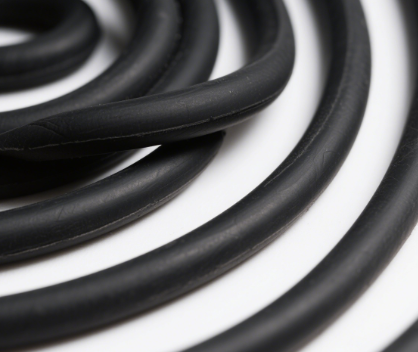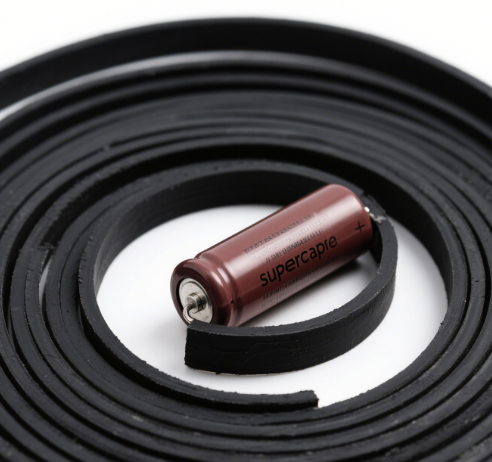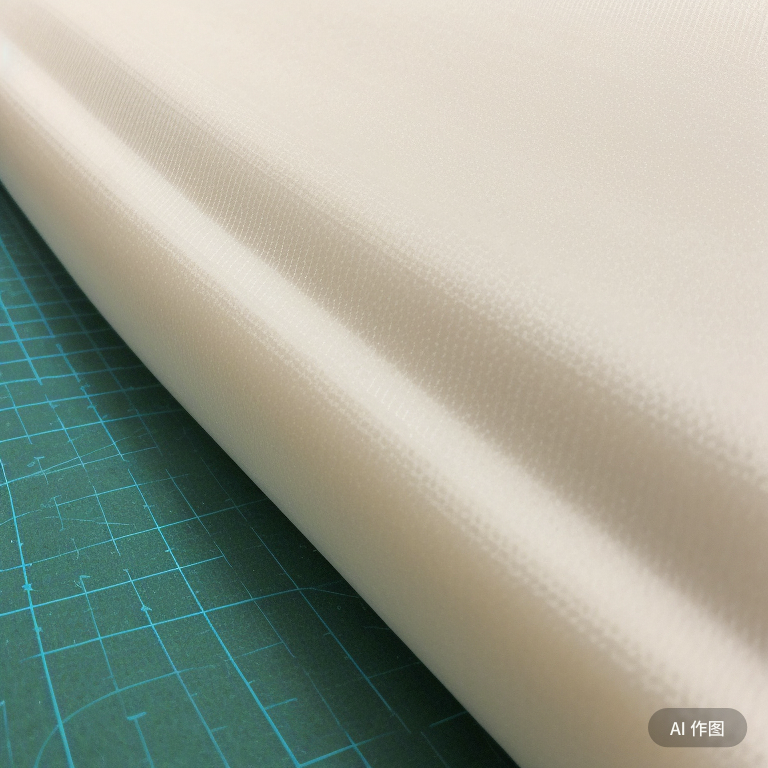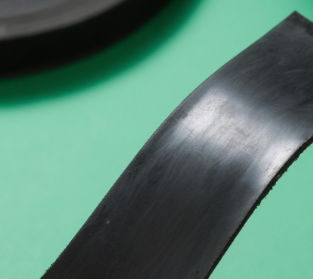electromagnetic shielding conductive rubber
Electromagnetic shielding conductive rubber is a composite material that achieves electrical conductivity by adding conductive fillers (such as silver, copper, aluminum, silver-plated glass particles, etc.) to the rubber matrix and also has the function of electromagnetic shielding. Its core characteristic lies in the combination of flexible sealing and efficient electromagnetic shielding, and it is widely used in fields such as electronic devices, communication, automotive, and aerospace. The following analysis is carried out from aspects such as material characteristics, working principles, application scenarios, technical parameters, and industry trends: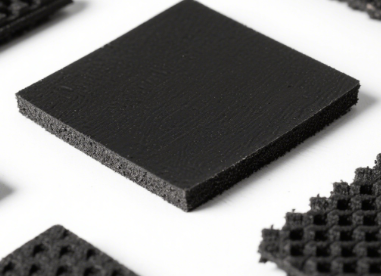
- Material Composition and Core Characteristics
Matrix Material
Commonly used silicone rubber (resistant to high and low temperatures, anti-aging), fluoro-silicone rubber (resistant to chemical corrosion), or EPDM (excellent weather resistance) are used to ensure the stability of the material in complex environments. For example, silicone rubber can be used for a long time at temperatures ranging from -65°C to 200°C, making it suitable for outdoor or high-temperature equipment.
Conductive Fillers
Metallic types: Pure silver (with the best electrical conductivity and a shielding effectiveness of up to over 120 dB), silver-plated copper (lower cost but prone to oxidation), and silver-plated aluminum (lightweight).
Non-metallic types: Nickel-plated graphite (high cost-performance ratio, with a shielding effectiveness of approximately 100 dB), and carbon black (strong wave absorption ability, suitable for microwave oven sealing).
Composite fillers: For example, nickel-coated copper powder combines high electrical conductivity and oxidation resistance, and its cost is only 1/3 of that of silver powder.
Key Performance Indicators
Volume resistivity: The range is 0.002~10 Ω·cm. The lower the resistivity, the better the electrical conductivity and shielding performance. For example, the resistivity of silver-filled rubber can reach 0.002 Ω·cm, while that of carbon black-filled rubber is 8 Ω·cm.
Shielding effectiveness (SE): The typical value is 50~120 dB, and the frequency range covers from 200 kHz to 10 GHz. For example, the shielding effectiveness of silver-filled rubber still reaches 120 dB at 10 GHz, while that of graphite-filled rubber is 50 dB.
Mechanical properties: Tensile strength is 1.38~3.8 MPa, elongation at break is 75%~200%, and compression set is ≤45%, ensuring long-term use stability. - Principles and Mechanisms of Electromagnetic Shielding
Dual Effects of Reflection and Absorption
Reflection loss: The conductive particles form a continuous conductive network, and electromagnetic waves undergo specular reflection on the surface of the material, weakening the intensity of the incident wave. For example, the reflectivity of silver particles to high-frequency electromagnetic waves can reach 99%.
Absorption loss: When electromagnetic waves penetrate the material, the electron movement of the conductive particles generates Joule heat, converting electromagnetic energy into thermal energy. For example, carbon black-filled rubber enhances its wave absorption ability through the nanoscale effect and is suitable for microwave oven sealing strips.
Optimization of Structural Design
Compression control: When the plate is compressed by 7%~15% and the circular cross-section is compressed by 12%~30%, the conductive particles are in the closest contact, and the shielding effectiveness is the best.
Multilayer composite: For example, FIP (Form-in-Place) conductive rubber forms a flexible sealing layer on the surface of the flange through the dispensing process, achieving both environmental sealing and electromagnetic shielding at the same time.
III. Typical Application Scenarios
Electronic Devices
5G base stations: High-frequency electromagnetic shielding rubber strips are used for AAU (Active Antenna Unit) to prevent electromagnetic wave leakage, and the shielding effectiveness is ≥120 dB.
Mobile phones/computers: Conductive rubber gaskets are used at the interfaces to suppress signal interference and are also dustproof and waterproof (IP67 rating).
Automotive and Aerospace
New energy vehicles: The battery pack seals need to meet both the requirements of resistance to electrolyte corrosion and electromagnetic shielding. Fluoro-silicone rubber-based products can work stably at temperatures ranging from -40°C to 150°C.
Aerospace: Conductive rubber is used at the joints of satellite cabins, which is radiation-resistant and lightweight and meets NASA’s weather resistance standards.
Medical and Military Industries
Medical equipment: Conductive rubber sealing strips are used in MRI shielding rooms, and the shielding effectiveness is ≥100 dB to ensure the normal operation of the equipment.
Military equipment: Conductive rubber is used for radar radomes to maintain electromagnetic compatibility (EMC) in harsh environments.
- Industry Standards and Certifications
International Standards
ISO 1853: Specifies the measurement method of the resistivity of conductive rubber to ensure the consistency of the electrical conductivity of the material.
MIL-STD-810: A military standard of the United States, which tests the stability of materials in environments such as high and low temperatures, vibration, and impact.
Domestic Standards
SJ 21486-2018: Specification for water and gas sealing electromagnetic protection composite conductive rubber strips, applicable to communication equipment.
T/TSIP 004-2023: Technical requirements for conductive rubber in the industrial field, covering indicators such as resistivity and shielding effectiveness.
Environmental Certifications
RoHS: Limits hazardous substances such as lead and mercury, and most commercial products have passed the certification.
FDA: Medical-grade conductive rubber needs to pass the food contact safety certification, such as silicone pacifiers. - Technical Challenges and Future Trends
Core Challenges
Cost control: The price of silver powder fluctuates greatly, and alternative solutions such as nickel-coated copper powder and carbon black filling need to balance performance and cost.
Long-term stability: Silver-plated copper particles are prone to oxidation, and the corrosion resistance needs to be improved through coating processes (such as nickel-copper composite coatings).
High-frequency performance: 5G communication requires materials to maintain efficient shielding in the millimeter-wave frequency band (above 28 GHz), and the dispersion of fillers and the dielectric properties of the matrix need to be optimized.
Cutting-edge Technologies
Nanofillers: Nanomaterials such as graphene and carbon nanotubes can increase the density of the conductive network. For example, the HAEC7-T rubber developed by Guangxi University has a resistance change of <5% after being stretched by 200%.
Smart materials: Pressure-sensitive conductive rubber is used in wearable devices, such as health monitoring bracelets, to sense human movement in real time.
3D printing: Customized conductive rubber structures, such as connectors with complex shapes, reduce mold costs. - Comparison of Typical Products
Filler Type Volume Resistivity (Ω·cm) Shielding Effectiveness (dB) Corrosion Resistance Cost Typical Applications
Pure Silver 0.002 120 Excellent Highest Aerospace, high-end communication equipment
Silver-plated Copper 0.004 120 Poor High Common electronic devices
Silver-plated Aluminum 0.008 110 Excellent Medium Automotive electronics
Nickel-plated Graphite 0.1 100 Good Low Civilian equipment, microwave ovens
Carbon Black 8.0 80 Poor Lowest Consumer electronics, wave-absorbing materials
Conclusion
Electromagnetic shielding conductive rubber, with its three functions of flexibility, sealing, and shielding, has become an irreplaceable key material for modern electronic devices. With the development of technologies such as 5G and the Internet of Things, the demand for high-frequency and high-reliability materials will drive industry innovation. In the future, nanofillers, 3D printing, and intelligent integration will become the main development directions. When selecting, it is necessary to comprehensively consider the application environment, shielding requirements, and cost to achieve the best performance balance.













